The Gothic-Mudejar gem to discover in a Segovian village

In the natural region of Tierra de Pinares , 50 kilometers northwest of the capital of Segovia, lies Coca , a beautiful town with an outstanding monumental complex and a natural environment worth highlighting. On a walk through its streets one can admire what remains of the wall that once completely sheltered the town, 200 metres with three towers, a crenellated parapet and the Arco de la villa –one of the three entrance gates that once existed–, and discover its must-sees such as the Mudejar tower of San Nicolás , built in the 12th century in imitation of an Islamic minaret, the Gothic church of Santa María la Mayor , whose interior features the Renaissance tombs of the Fonseca family made of Carrara marble, the Roman building , remains of a residence that must have belonged to a notable of the city and in which one can see part of the courtyard, several rooms and three apses, the Chico bridge , built over the Voltoya river, from the medieval period with successive reconstructions, and the Grande bridge, with a single eye and a semicircular arch, built over the Eresma river, possibly on remains of another Roman one that connected both banks.
But, without a doubt, its most notable monument is its castle , which, located at the western end of the town center, takes advantage of one of the meanders traced by the Voltoya River as a natural defense.
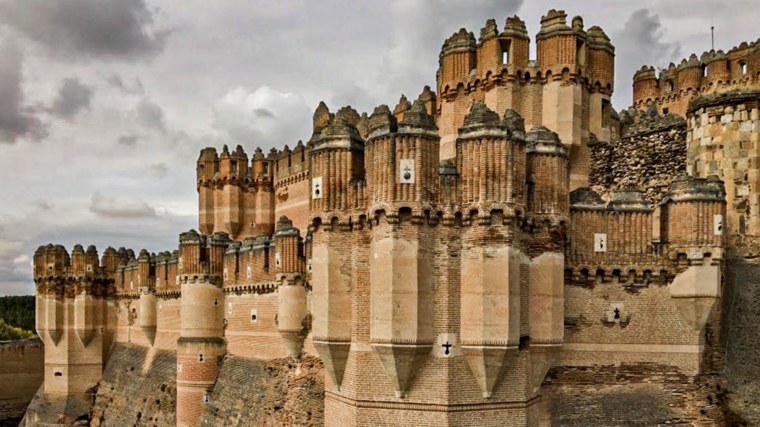 The castle is built entirely of brick
andrés m quesada-wikimedia commons
The castle is built entirely of brick
andrés m quesada-wikimedia commons
Coca Castle was not built on a hill, like most castles. Instead, its defensive system takes advantage of the steep slopes of the terrain that serve as the base for the fortress, which rises over a wide and deep moat about 20 meters deep.
Its origin dates back to 1453 when the Archbishop of Seville, Don Alonso Fonseca, ordered its construction, with the prior permission of King John II of Castile. The architect was the master builder Alí Caro , to whom the Casarrubios del Monte Castle is also attributed. Later, it passed into the hands of the House of Alba , who ceded it to the Ministry of Agriculture in 1954 to house a Forestry Training School that still operates today. In 1928, it was declared a Historic-Artistic Monument. Throughout its history, it has left behind a few anecdotes, such as the one about the Marquis of Cenete, son of the great Cardinal Mendoza, who ended up scalded by embers thrown from the battlements when he was courting a lady of the Fonseca family. What we see today of this castle is the result of a restoration carried out between 1956 and 1958 by the Ministry of Agriculture.
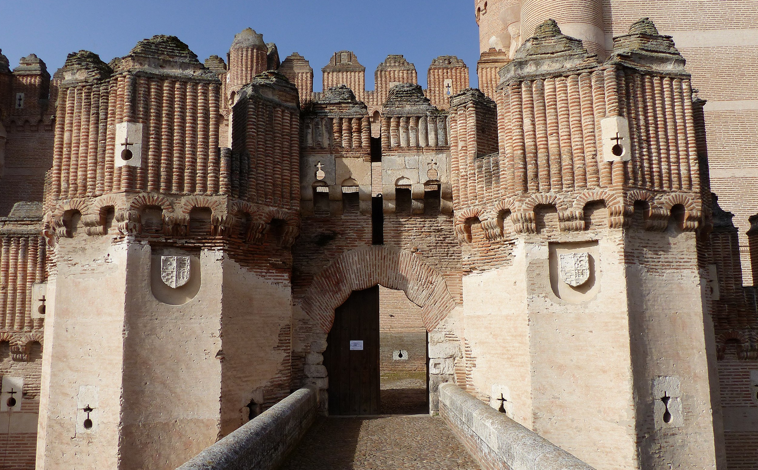
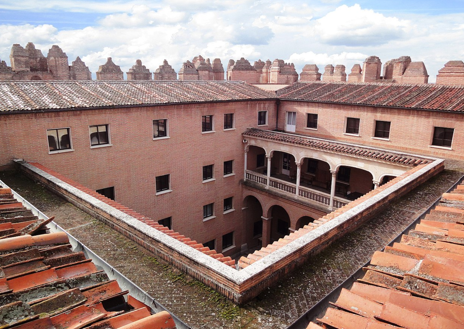
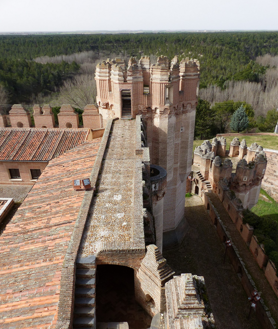
This building , built entirely of brick except for the arrow slits and windows, which were made of stone, is one of the most beautiful examples of Spanish Gothic-Mudejar art , as well as one of the most famous Castilian castles. The first thing you can see is the enormous moat, crossed by a drawbridge, leading to the first of the two fortified belts, which have a quadrangular layout with four octagonal towers equipped with small turrets and sentry boxes on each side. The second belt corresponds to the residential core of the fortress itself, which is built around the parade ground. Beyond its exterior appearance, the different rooms inside are well worth exploring.
During the guided tour you can see the chapel , located on the lower floor of the Keep and which has some Romanesque and Gothic carvings of the Virgin and Child, as well as two 16th century panels of religious themes: a Crucifixion and an Annunciation, the Weapons Room , whose main attraction is the decoration of the walls and ceiling with Mudejar mosaics and the vault with Gothic ribs, the Museum Room , where there is a Mudejar Ajimez with two arches, remains of the parade ground and original palace, several Carrara marble pilasters - one of them with the coat of arms of the Fonseca family -, the Tower Gallery , where you can admire armor and weapons from the 16th and 17th centuries and at the highest part the Viewpoint , from where you get views of the Land of pine forests and the surrounding towns at about 45 meters high (including the moat).
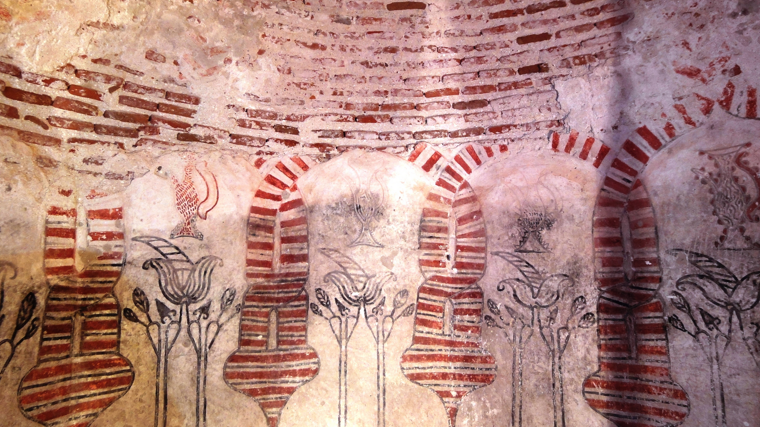 Decoration of the interior walls of Coca Castle
jncrismg-wikimedia commons
Decoration of the interior walls of Coca Castle
jncrismg-wikimedia commons
After a brief stroll along the promenade from the Keep, you reach the North Gallery , where you'll find reproductions of various documents related to the castle and town. Among these, the Royal Faculty granted by King John II of Castile to Alonso de Fonseca to build a fortress in Coca stands out. Next, you'll find the Jar Room, where jars are depicted among Mudejar arches and on plant motifs; the Dungeon Access Room , a perfect viewing point for the entrance to the fortress core; and finally, the dungeon itself.
General admission is 3 euros , and reservations must be made at least 48 hours in advance. The museum is closed on the first Tuesday of each month.
ABC.es





